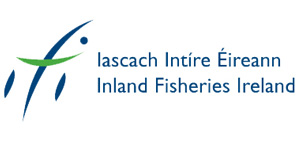Sampling Fish for the Water Framework Directive – Summary Report 2020
Executive Summary
Inland Fisheries Ireland has been assigned the responsibility by the Environmental Protection Agency of delivering the fish monitoring requirements for the Water Framework Directive (WFD) in Ireland. In 2022, 24 lakes, 169 river sites and 12 transitional water bodies were surveyed as part of the national IFI fish surveillance monitoring programme.
All surveys were conducted using a suite of European standard methods, including a range of different net types to sample lakes and transitional waters, and electrofishing methods to sample rivers. A total of 16 species (sea trout are included as a separate “variety” of trout) and three cyprinid hybrids were captured across the lakes surveyed in 2022. European eel had the widest distribution, with perch the most abundant species. The FIL2 ecological classification tool was used together with expert opinion to assign fish ecological status to each lake surveyed. Five lakes were assigned a status of High; eight as Good; five as Moderate; two as Poor and four as Bad. All lakes had been surveyed previously, and when compared to previous results, 14 lakes had an unchanged ecological status, four showed improved status and six had deteriorated.
Sixteen fish species (sea trout are counted as a separate “variety” of trout) and two cyprinid hybrids were recorded across 169 river sites surveyed in 2022, with brown trout the most frequently encountered species, occurring in 120 out of 169 sites. The FCS2-Ireland ecological classification tool was used together with expert opinion to assign ecological status to each river site. A total of three sites were classified as High status, 31 as Good, 83 as Moderate, 41 as Poor and three as Bad. Eight sites were unclassified, following a sense check using expert opinion. Of the 169 sites assigned an ecological fish status in 2022, 53 had previously been surveyed and classified. Of these, the status of 41 sites remained the same between surveys, while five sites deteriorated and seven improved.
A total of 33 species of fish were captured in the twelve transitional waterbodies surveyed in 2022. Sand goby was the most widely distributed species, occurring in all 12 waterbodies. The Estuarine Multimetric Fish Index (EMFI) ecological classification tool, together with expert opinion was used to assign ecological status to each transitional waterbody surveyed. One transitional waterbody was classified as Good status and eleven as Moderate. All 12 waterbodies had previously been surveyed and classified. Two sites remained the same between surveys, while ten waterbodies deteriorated.
Topics: Summary Reports |
